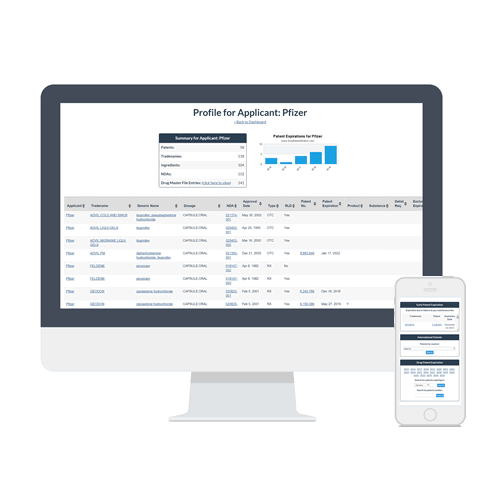
The pharmaceutical industry has faced significant challenges in recent years, including the loss of patents, increased regulatory scrutiny, and rising research and development costs. Amidst these challenges, the concept of patient centricity has gained prominence as a key strategy for improving the drug development process and enhancing patient outcomes. Patient centricity involves designing meaningful experiences for and with patients, ensuring that their needs and preferences are integrated into every stage of the drug development lifecycle. This approach is particularly crucial in the development of generic drugs, where the focus on cost-effectiveness can sometimes overshadow patient needs.
Table of Contents
The Importance of Patient Centricity in Generic Drug Development
Generic drugs account for a significant portion of the pharmaceutical market, offering cost-effective alternatives to branded medications. However, the development of generic drugs often prioritizes cost savings over patient needs, leading to a lack of patient-centric design. This oversight can result in medications that are not user-friendly, leading to poor adherence and suboptimal outcomes. By incorporating patient centricity into generic drug development, manufacturers can create products that are both cost-effective and patient-centric, ultimately improving health outcomes and enhancing patient satisfaction.
Key Elements of Patient Centricity in Generic Drug Development
Several key elements are essential for prioritizing patient centricity in generic drug development:
Patient Engagement: Engaging patients in the drug development process ensures that their needs and preferences are integrated into the design of the medication. This can be achieved through patient surveys, focus groups, and clinical trials that involve patient feedback.
User-Centric Design: The design of the medication should be user-centric, taking into account factors such as ease of use, dosing frequency, and packaging. This can be achieved by involving patients in the design process and conducting usability studies to identify potential issues.
Patient-Reported Outcomes: Patient-reported outcomes (PROs) provide valuable insights into how patients experience and respond to medications. Incorporating PROs into clinical trials and post-marketing surveillance can help identify areas for improvement and optimize the drug development process.
Shared Decision-Making: Shared decision-making involves collaboration between patients, clinicians, and manufacturers to ensure that treatment plans align with patient needs and preferences. This approach can improve adherence and health outcomes by empowering patients to take an active role in their care.
Challenges and Opportunities in Patient-Centric Generic Drug Development
While prioritizing patient centricity in generic drug development offers numerous benefits, it also presents several challenges:
Cost and Resource Constraints: Incorporating patient centricity into generic drug development can increase costs and resource requirements, potentially impacting the cost-effectiveness of the medication.
Regulatory Frameworks: Existing regulatory frameworks may not fully support patient-centric drug development, requiring manufacturers to navigate complex and often conflicting regulations.
Data Integration: Integrating patient data and feedback into the drug development process can be time-consuming and resource-intensive, requiring significant investments in data analytics and management.
Despite these challenges, the opportunities for patient-centric generic drug development are substantial. By prioritizing patient needs and preferences, manufacturers can create medications that are both cost-effective and patient-centric, ultimately improving health outcomes and enhancing patient satisfaction.
Case Studies and Industry Insights
Several case studies and industry insights highlight the importance of patient centricity in generic drug development:
- A study by Carli Lorenzini Giana and Olsson Annika explored how pharmaceutical companies can develop patient-centered packaging, emphasizing the need for a business case that justifies patient-centric development and the importance of stakeholder buy-in.
- Avalere’s HEOR Trends report emphasized the need for patient-centric clinical research and drug development, highlighting the importance of understanding patient needs and preferences in treatment selection.
- A study by Enrica Menditto et al. discussed the impact of patient-centric pharmaceutical drug product design on medication adherence, emphasizing the need for a comprehensive approach that considers patient factors such as age, visual impairment, and cognitive impairment.
Conclusion
Prioritizing patient centricity in generic drug development is crucial for creating medications that are both cost-effective and patient-centric. By engaging patients in the drug development process, incorporating user-centric design, and leveraging patient-reported outcomes, manufacturers can improve health outcomes and enhance patient satisfaction. While challenges exist, the opportunities for patient-centric generic drug development are substantial, and manufacturers that prioritize patient centricity are likely to reap significant benefits in terms of improved health outcomes and enhanced patient satisfaction.
References
- Lorenzini Giana, C., & Olsson, A. (2021). Exploring How and Why to Develop Patient-Centered Packaging: A Multiple-Case Study with Pharmaceutical Companies. Journal of Pharmaceutical Sciences, 110(9), 3431–3441. doi: 10.1007/s43441-021-00338-0
- Avalere. (2023). HEOR Trends: Patient-Centricity. Retrieved from https://avalere.com/insights/heor-trends-patient-centricity
- Menditto, E., Orlando, V., De Rosa, G., Minghetti, P., Musazzi, U. M., & Cahir, C. (2020). Patient Centric Pharmaceutical Drug Product Design—The Impact on Medication Adherence. Journal of Pharmaceutical Sciences, 109(1), 13–24. doi: 10.1016/j.jphs.2019.12.011


